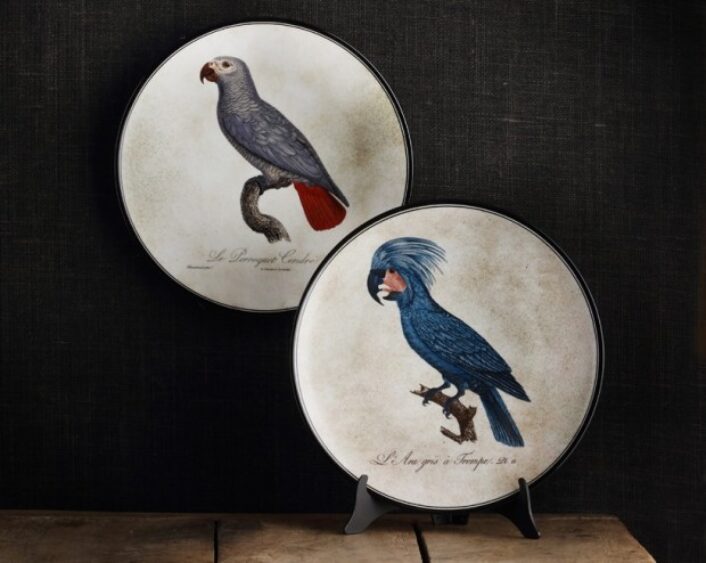Culture
Incredible flight paths
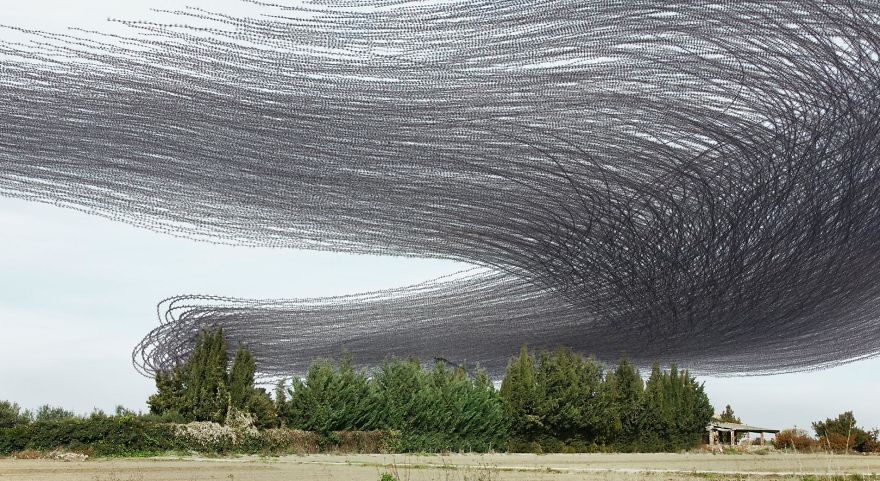
These amazing photographs were created from the fluttering of wings.
Image courtesy of: Bored Panda, photographed by: Xavi Bou
Most people looking at birds see just one specimen, one single bird. However Xavi Bou is different in that he looks outside the box, at the bigger picture. The Catalan photographer looks for the formations that migratory flocks of birds create. Bou’s series “Ornitographies” was a natural progression. As a naturalist, the photographer knew that his next project would be about wildlife and having tracked animal footprints in the past, he was looking for something different. All it took was a glance at the sky and “Ornitographies” was born.
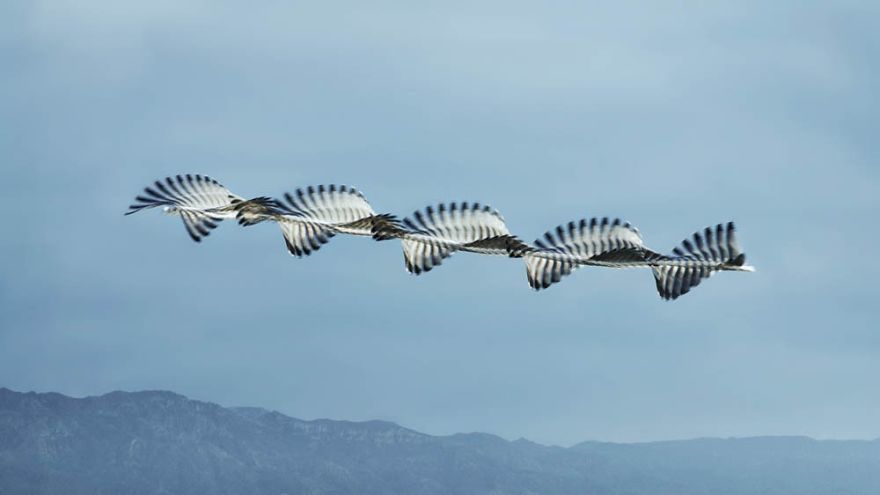
The series arose from Bou’s desire to capture unnoticed moments.
Image courtesy of: Bored Panda
To create these images, Bou uses a technique developed in the mid-19th century called chronophotography. This technique shows the movement that happens in several frames. The photographer takes as many pictures as possible in order to freeze every single movement of the object in motion. Interestingly, chronophotography was originally created for scientific purposes… specifically by a British photographer who wanted to prove that horses do actually gallop with all four feet off the ground.
About his specific style, Bou says, “The difference between traditional chronophotography and mine is that I try to overlap every frame, because I’m interested in the complete shape that’s produced by the movement.”
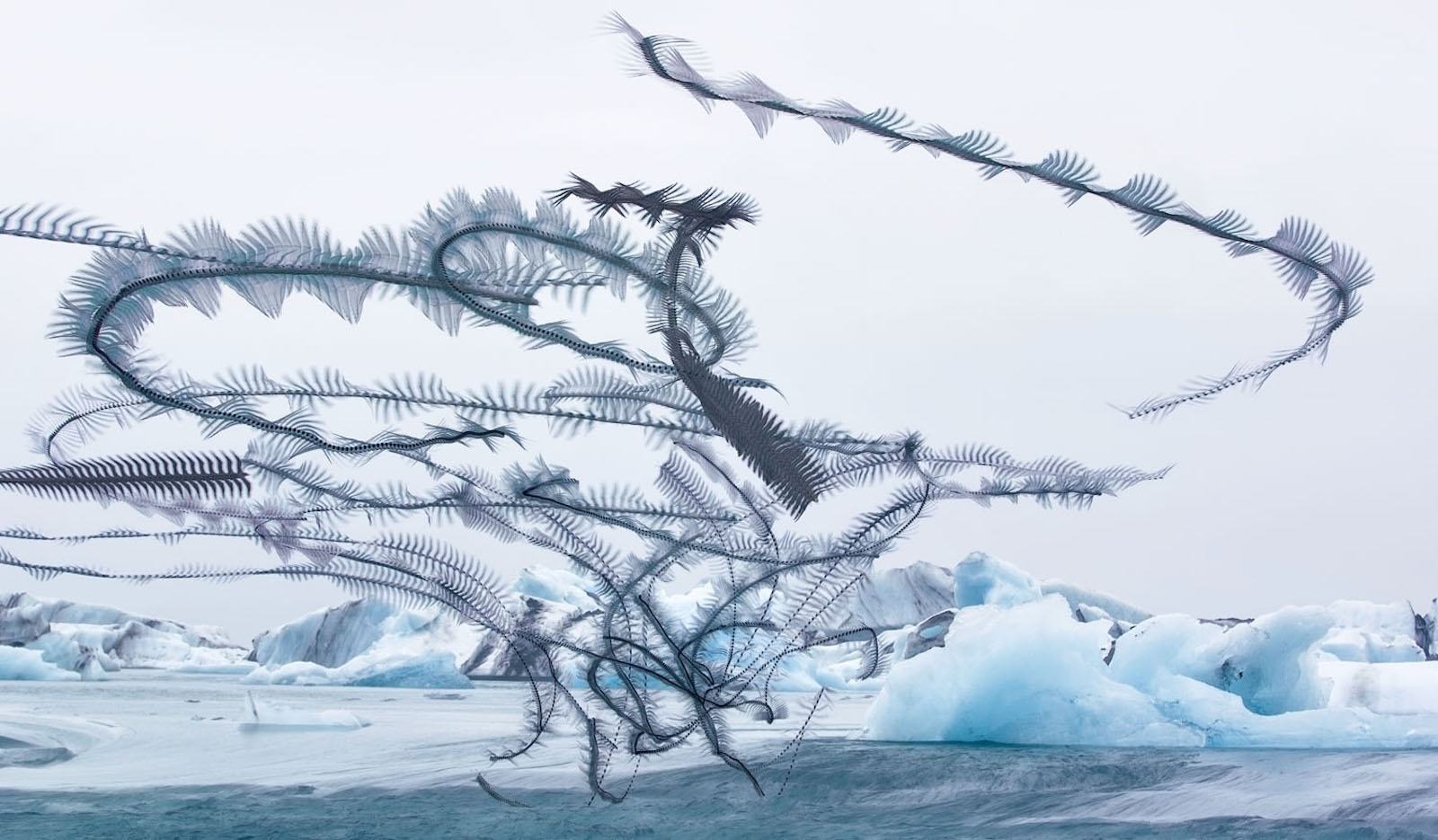
Part of Bou’s “Ornitographies” series, these photographs were taken in Iceland.
Image courtesy of: Ignant
The Catalan photographer takes the photographs from a distance so that the images are non-invasive and so they do not disturb the birds. More so, the photographs focus on the collective flock and where they are heading. The result is a series of amazing images with thousands and thousands of birds organically melding into geometric shapes that appear to move on paper, right in front of the viewer’s eyes.
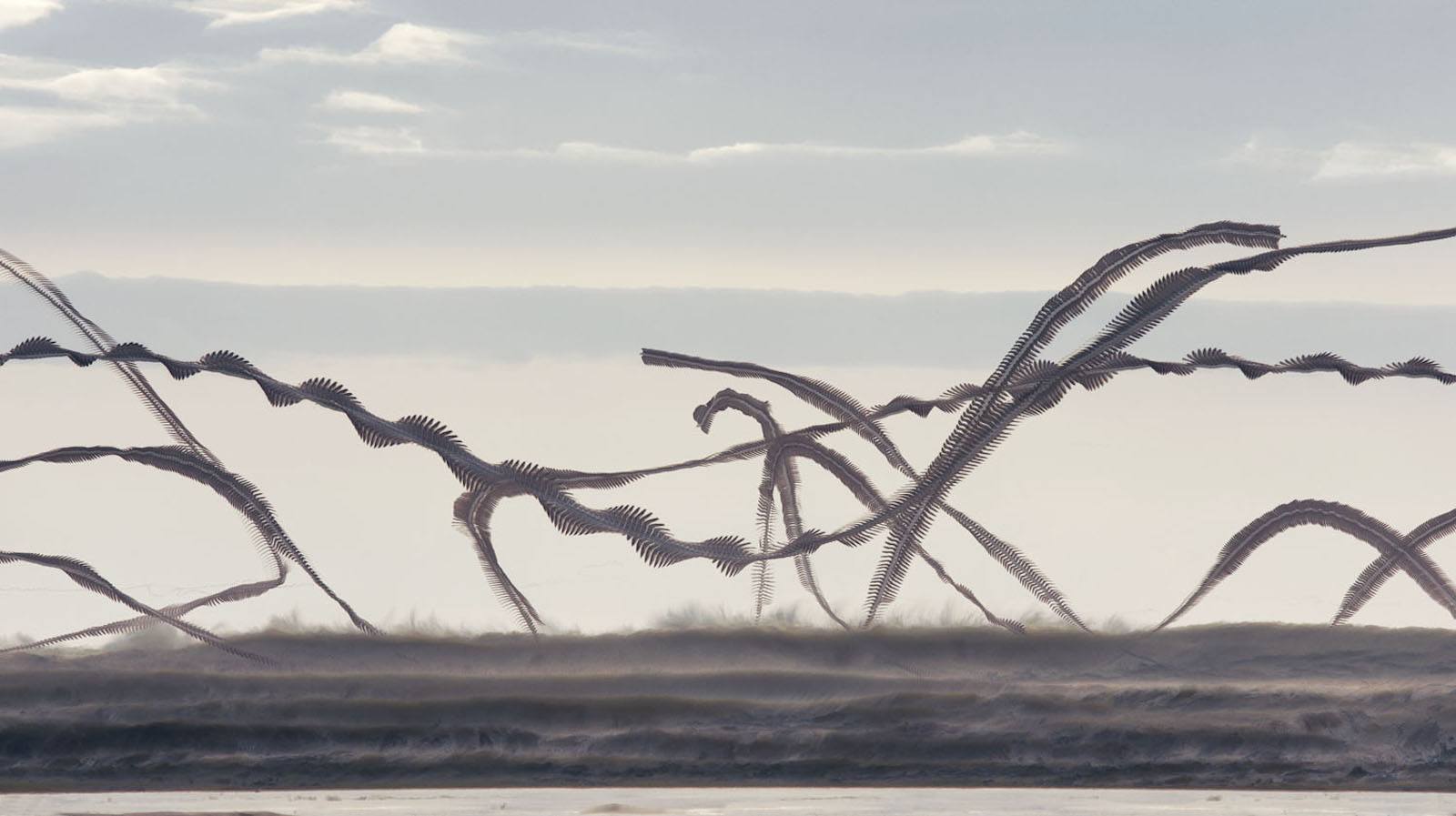
Initially, Bou started photographing close to home. As the series grew, so did the distance he traveled. Bou has spent time in places as far away as Wyoming and Iceland photographing different bird species.
Image courtesy of: Ignant
When Bou layers the hundreds of pictures he takes, “movement” happens… that is when the birds look like they are flying. The result looks like black ribbons or helixes and upon studying them further, these photographs provide insight into birds’ group mentality.
The artist says, “Technology, science, and creativity combine to create evocative images which show the sensuality and beauty of the bird’s movements. Ornitographies’ is a balance between art and science.”
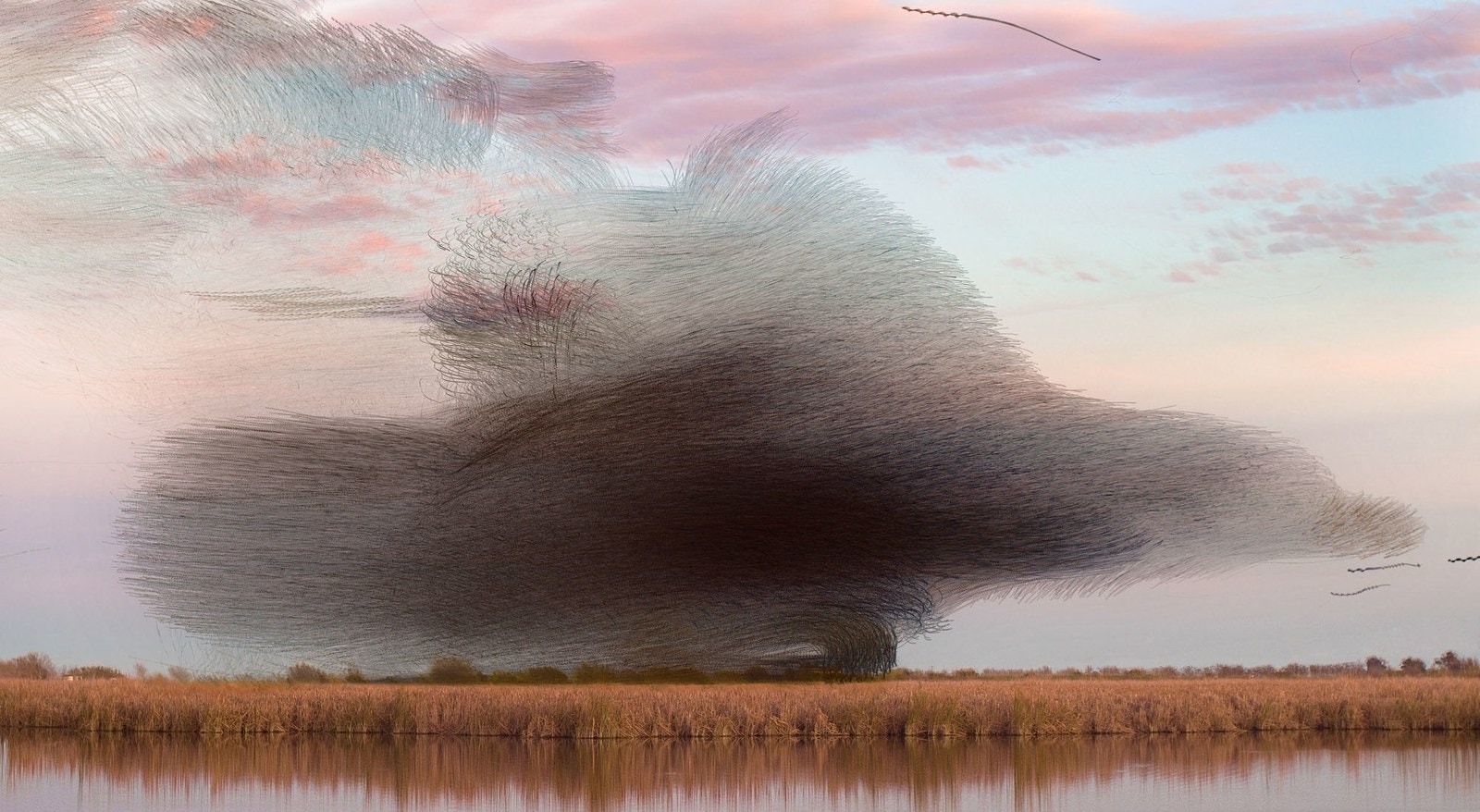
When threatened, these flocks of birds can fly at a speed of up to 50 miles per hour.
Image courtesy of: Wired
Bou photographed his first big flock in 2011, and it took several years to find another flock that big. Those birds were found roosting in a marsh in the Ebro Delta near Barcelona, a 79,000-acre wetland. Their routine was pretty specific, each day they fed in the fields and went to sleep in the reeds at night.
Huge flocks of birds remain together for safety. With hawks and falcons nearby, a mass of birds makes it tougher for the hunters. It is when a predator swoops in to attack that the prey disperses in a “wave of agitation.” When this happens the pulse through the flock surpasses speeds of 50 miles per hour.


